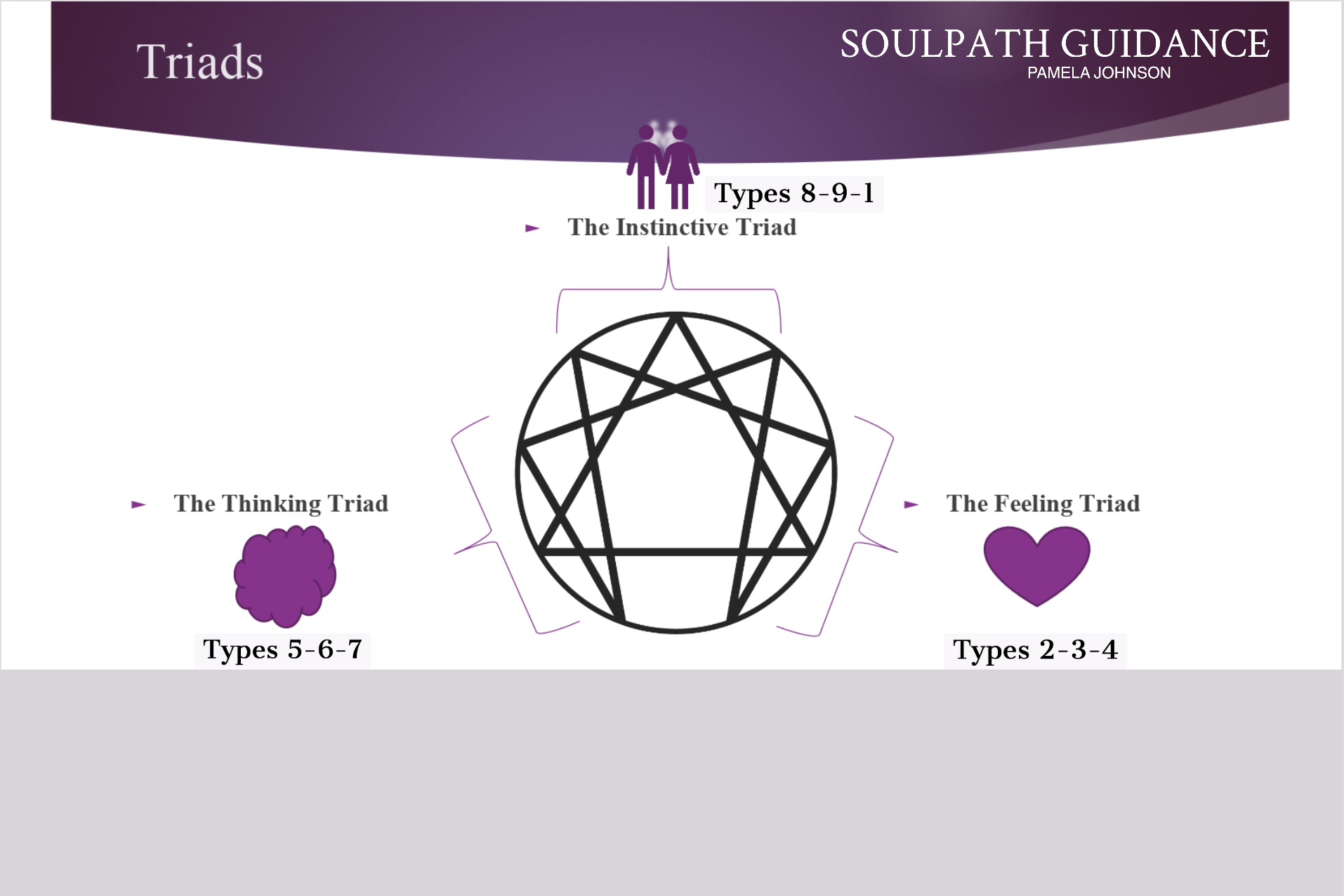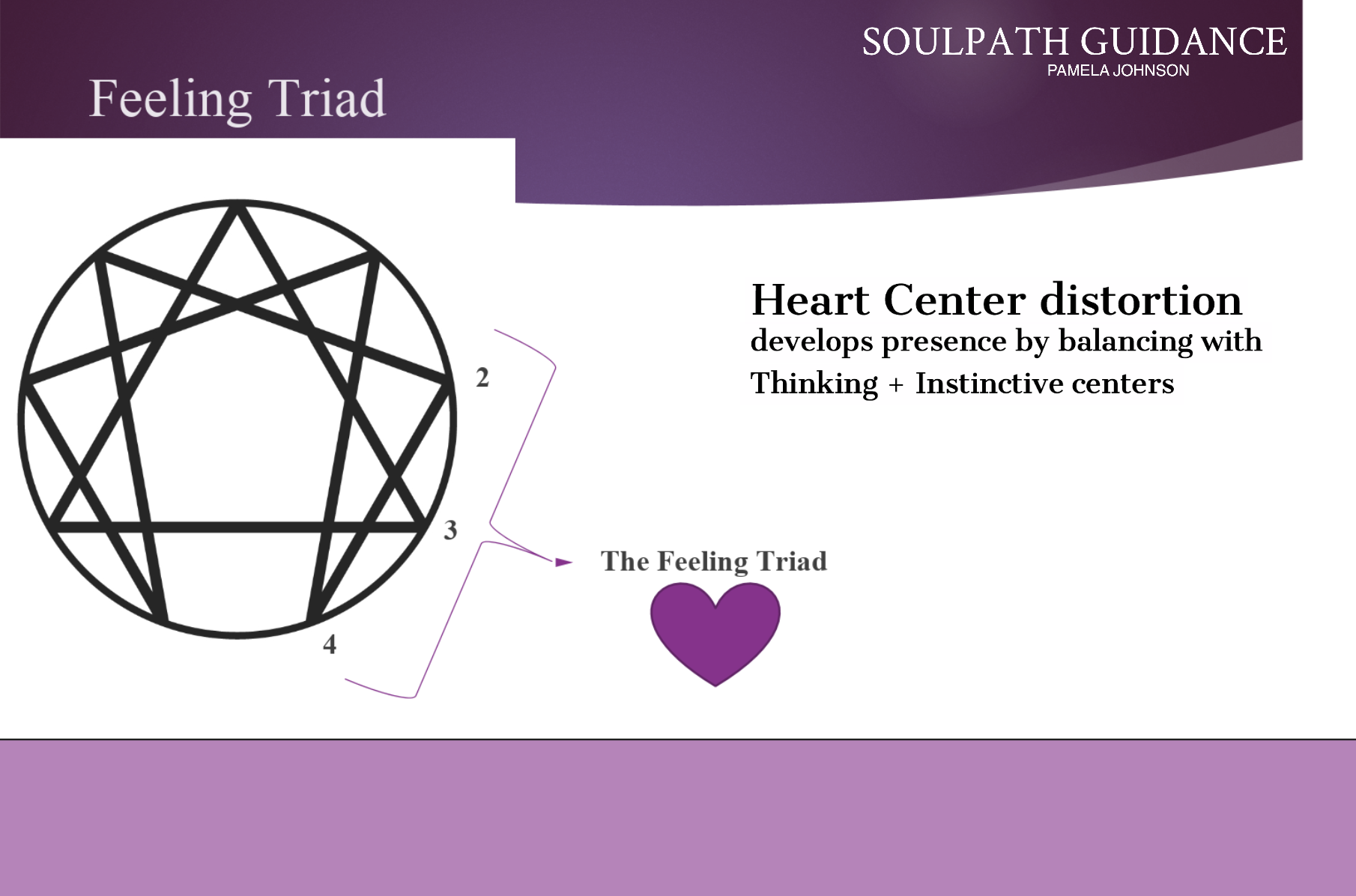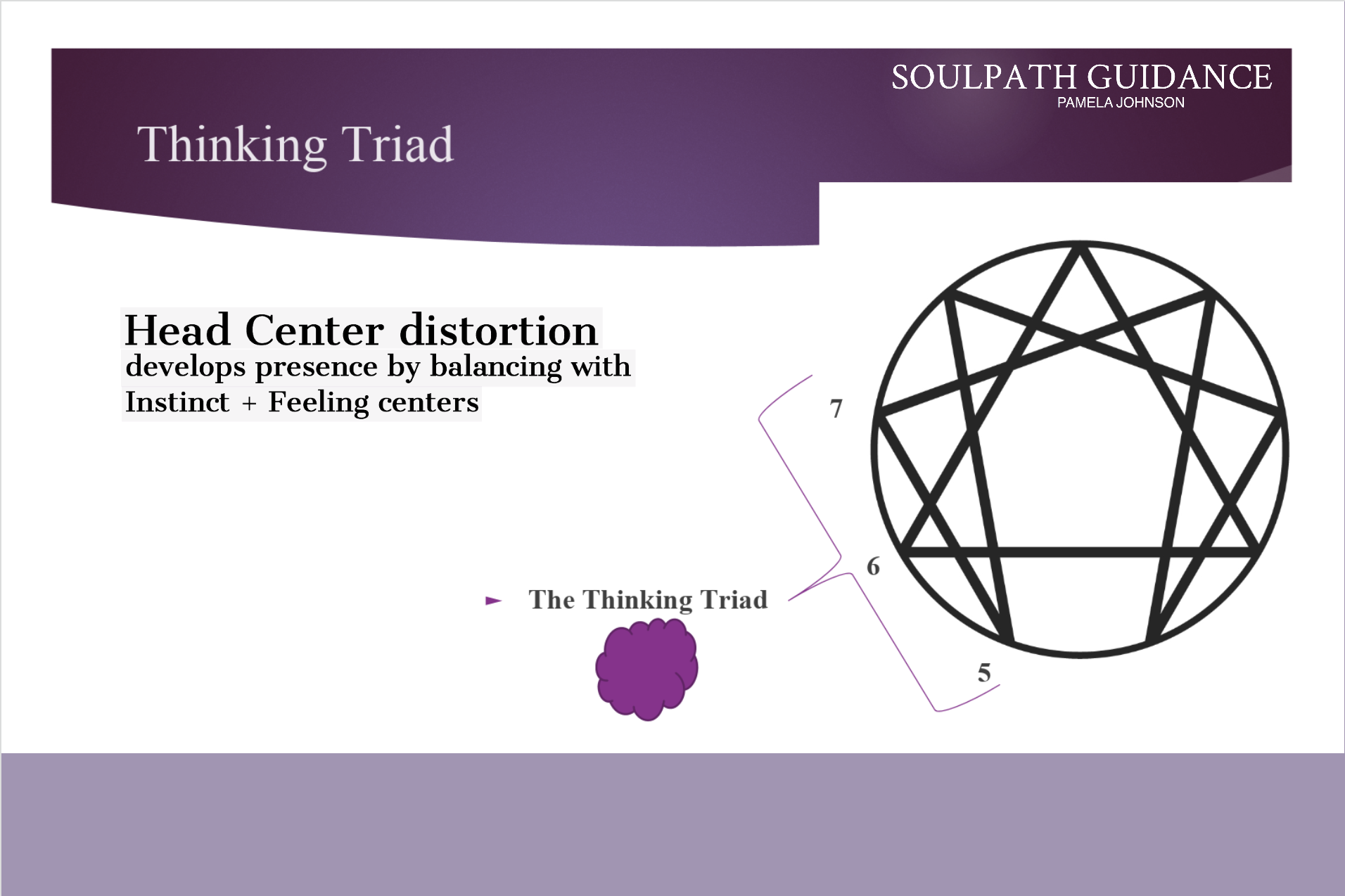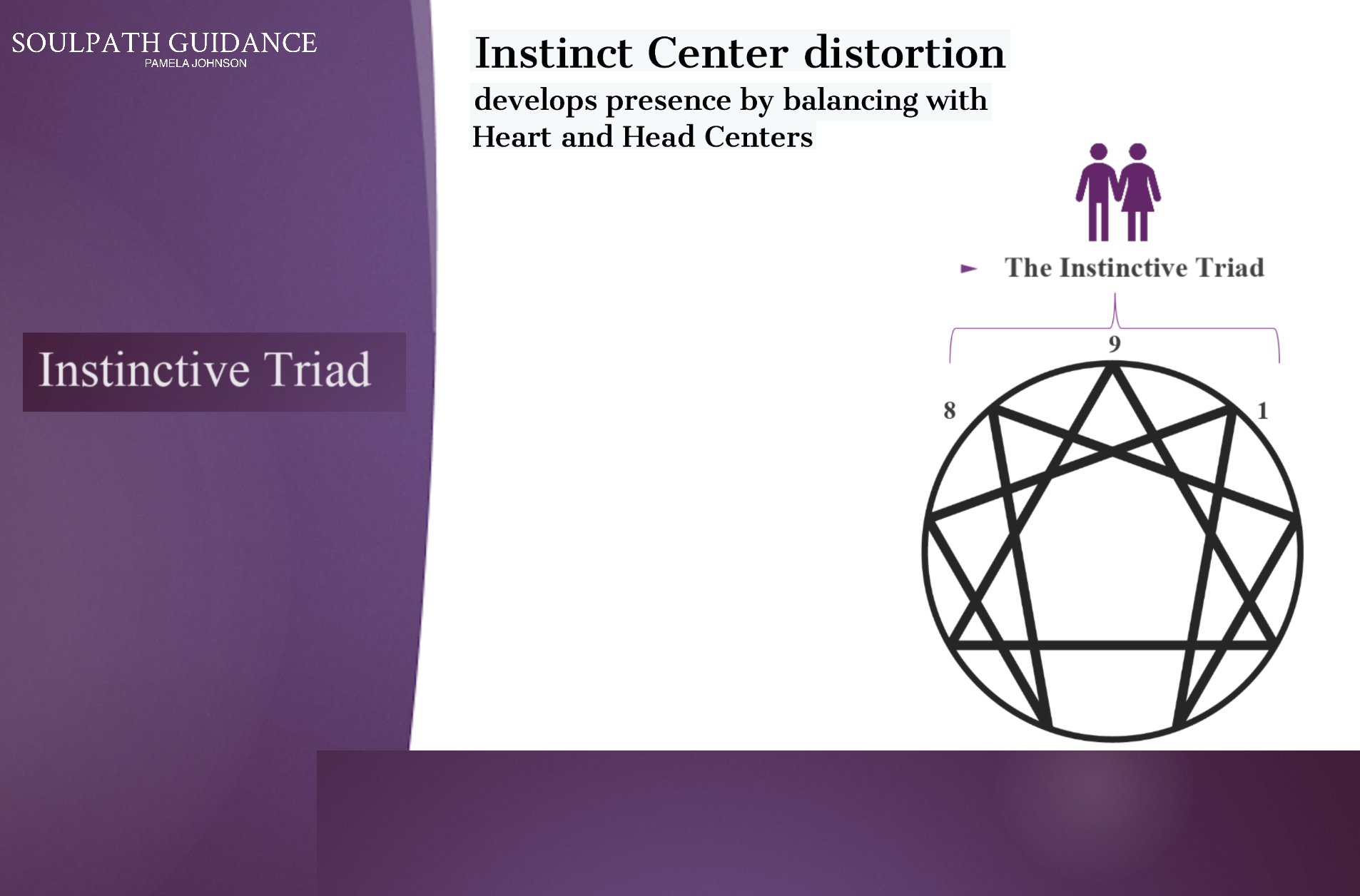about: The Ancient Wisdom of The Enneagram
Overview
The Enneagram is an ancient symbol made up of 9 personality types or ways of being in the world. It serves to wake us to habitual patterns that bring us down, keep us stuck and sabotage our dreams. It’s a map for self-discovery but also a tool to bring people together - to see that our way of viewing the world isn't shared by all.
The Figure
The Enneagram is composed of three basic parts:
The 9 Points of The Enneagram
The Nine Points represent the 9 Types. Each is associated with a defining personality name or nickname, as well as a descriptive phrase. You might notice that the defining names or phrases differ, but you’ll find that they all convey a particular expression of the human condition and of consciousness for each Type. Detailed descriptions of each Type can be listened to on the audio portion of the Free “Discover Your Enneagram” Gift (request it at top of this page).
Because your Soul is unique, you will never be an exact Type. There is always incremental variation. The objective is to use the Points on The Enneagram Circle to get close enough to begin noticing your subconscious patterns of behavior. Then, the more your self-observe, the more accurate your typing becomes and your Ego ceases excusing itself.
History + Origin in Brief
It’s important to know that the origins of The Enneagram are disputed and unclear. Its rich history, however, is fascinating as it seems connected to various spiritual, oral, mathematical (sacred geometry and mystical mathematics) and philosophical traditions. I support a view that The Enneagram as both symbol and tool is the result of a merging of ancient mystical practices as cultures with unique perspectives sought to understand the human condition and human connectedness and interconnectedness. That parts of The Enneagram seeming to have presence in Christian mysticism, esoteric Judaism and some Sufi Islamic traditions might mean eastern origins. It definitely surfaced later in Greece where it was given the name Enneagram (Ennea being Greek for Nine) and became very popular. It surfaced again in South America in the 1960’s constituted by Oscar Ichazo as The Traditional Enneagram (containing components from mystical Judaism, Christianity, Islam, Taoism, Buddhism, and ancient Greek philosophy - particularly Socrates, Plato, and the Neo-Platonists). It was then brought to North America where it was applied in ways to psychology. Much can be found about The Enneagram through practical research online and in books or videos.
Confronting The Ego
When we begin with The Enneagram, we confront our Ego.
Our Ego began forming when we were very young and became who and how we think we need to be to survive. Our Ego is not a “bad” thing. It’s just the face we put on for the world and sort of “got stuck,” locking us into patterns of behavior that cycle within us as we navigate the world. But we intuitively know our Ego is limited and keeps us reactive - operating in patterns that constrain us to limited fulfillment and happiness.
“We have to distinguish between a (person) as they are in essence, and as (they) are in ego or personality. In essence, every person is perfect, fearless, and in a loving unity with the entire cosmos; there is no conflict within the person between head, heart, and (body) or between the person and others. Then, something happens: the ego begins to develop, karma accumulates, there is a transition from objectivity to subjectivity, the person falls from Soul essence into Ego personality.”
Your Type’s Social Style Clusters or “Hornevian Groups”
Your Type has a grouping called the Social Style or “Hornevian Group.” Think of these as “social stances” that define how your Type gets needs met. The three Social Style Clusters are made up of the Dutiful Types, the Withdrawn Types + the Initiator or Confident Types.
Note that each Type in a given Social Style Cluster has a slightly different way or posture about this.
As you work to bring deeper inner knowing to all of your Centers of Intelligence, compassion and awareness aid you to experience balance in your dominant Center of Intelligence from your Triad grouping. With the other two Centers, you have the opportunity to also balance your dominant Social Stance with the other two Stances. There is great relief when you end up being even more present and attuned to yourself, to other people and to situations.
Identifying Your Wings
While your dominat Type drives your personality, your Wings add "flavor." This flavor can compliment or contradict aspects of your overall personality. Your dominant Wing is the “second side” of your personality, and worth much consideration to best understand yourself or someone else. You can have balanced Wing Types but typically one is dominant over the other. There is some evidence that as you age or pursue spiritual work, your less dominant Wing becomes much more active.
Connecting Lines: Disintegration (Stress) + Integration (Growth)
Each Type has a direction or “movement” for Disintegration (Stress) + Integration (Growth). Arrows pointing away from your dominant Type indicate your Stress Type. Arrows pointing to your dominant Type indicate your Growth Type.
Our Soul moves us along the lines to bring balance and much of this movement is unconscious. A high intention to hold is to fluidly move about The Enneagram while present and consciously integrating the positive empowerment of each Type. The more present you are, the more relaxed + dynamic you become … and the more choice you have in your life.
Deep inner work allows your dominant Type to lessen its grip on you, and you become more awake + aware. When you notice you are experiencing either your Growth or Stress Types, you will also have access to the same framework of that Type’s Center of Intelligence. The efficiency + effectiveness of this directly relates to initial acceptance through self-realization.
Instinctual Subtypes or “The Three Instincts”
The 3 additional “instincts” necessary for your survival as an individual + as a member of the human species are found in the Body Center of Intelligence. They are:
self-preservation instinct
For preserving and paying attention to resources, health, home, food, finances, time.
sexual instinct or “attraction instinct”
For transmitting + paying attention to what attracts you from new projects + ideas to people + movies/books, intense studies + focus, living life to the fullest.
social instinct or “adaptive instinct”
For navigating and paying attention to connecting socially, feeling part of the larger group, sense of belonging to a tribe, tuned into nonverbal cues, adapting to needs of others.
We depend on these 3 hard-wired, animal instincts to sustain life. Balancing our instincts builds a foundation to support our Soul’s pull for mystical experiences. Your instincts are stacked with one dominant, one average and one considered your “blind spot”. Your dominant instinct drives your focus + attention ( anchoring you into a full set of attitudes and values that you are most comfortable with). Your second Instinct supports the dominant Instinct. And lastly, your third Instinct that is the least developed may leave you feeling unconsciously threatened and looping in a survival mode.
With the “Three Instincts” pairing with your Enneagram Type, it can be difficult to sort out on your own.
Your Type’s Basic Triad Group + Its Center of Intelligence
Your Enneagram Type is grouped into one of three Basic Triads along with two other Types. Each Triad has its own Center of Intelligence or “Field of Awareness” and is the primary way the Type perceives and makes sense of the world. Depending on your Type, you have a distortion in one of these Centers of Intelligence. It colors your world, often leaving you feeling imbalanced and constricted.
Knowing how your Enneagram Type patterns itself within its Center of Intelligence is vital because you may be overusing, underusing or completely blocked off from it. By learning to become more conscious of all three centers operating harmoniously, you take your first step toward Presence.
















